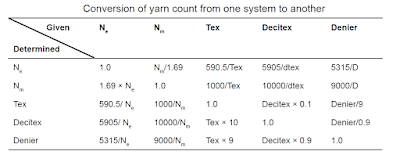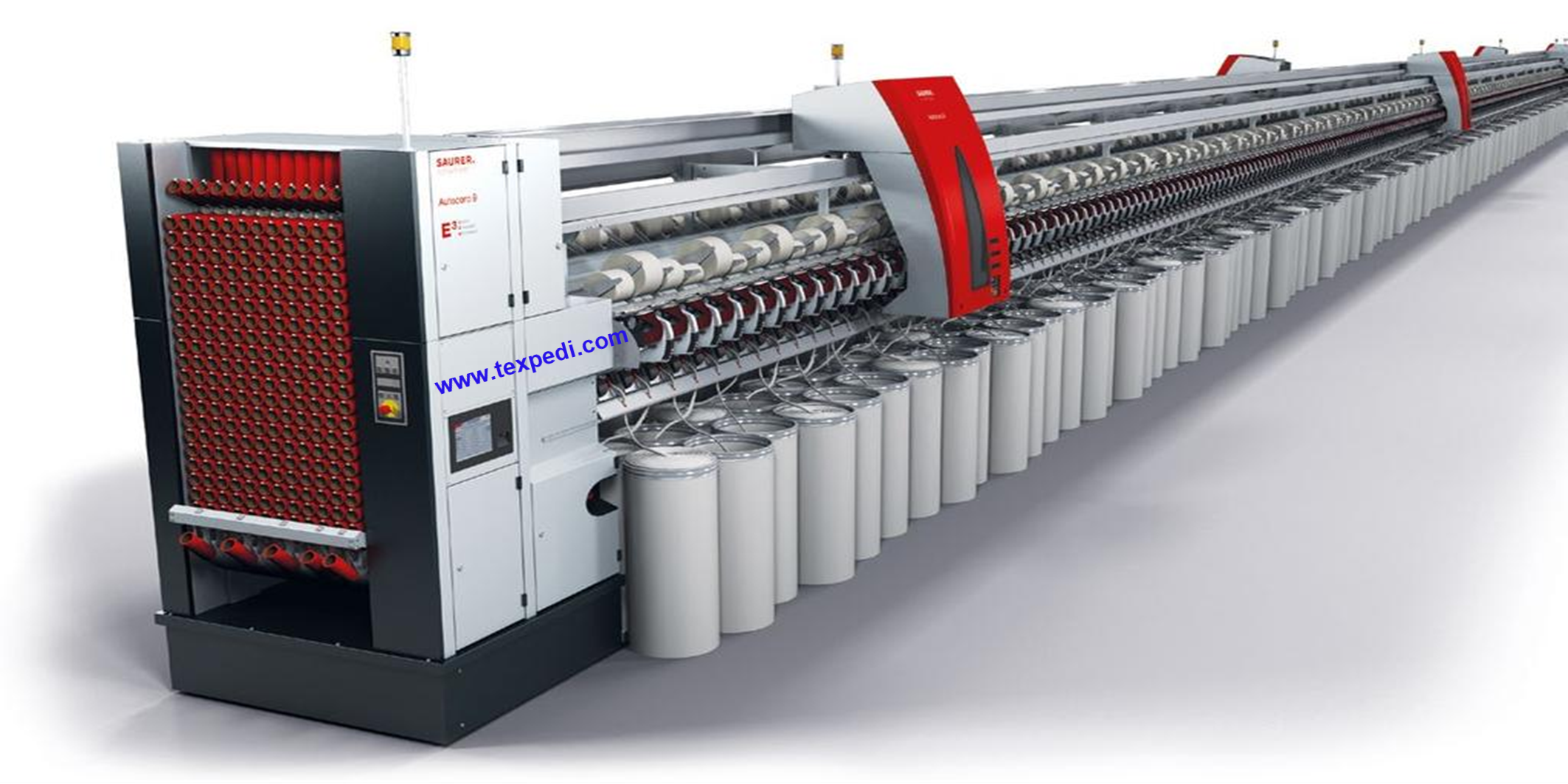Count: It is a numerical expression of yarn fineness or coarseness and also indicates the relationship between length and weight (the mass per unit length or the length per unit mass) of that yarn. Another term ‘linear density’ is also used to express the yarn fineness or coarseness. We can have an idea about the yarn diameter by yarn count.
Classification of Count:
1. Direct Count system (weight per unit length)
2. Indirect Count system (length per unit weight)
Direct Count system (weight per unit length): In this system, the weight of a fixed length of yarn is determined and the weight per unit length is the yarn count. The common feature of all direct count systems is the length of yarn fixed, and the weight of yarn varies according to its fineness. The following formula is used to calculate the yarn count:
N= W / L
where,
N = Yarn count or numbering system
W = Weight of the sample at the official regain in the unit of the system
Indirect Count system (length per unit weight): In this system, the length of a fixed weight of yarn is measured and the length per unit weight is the yarn count. The common feature of all indirect count systems is the weight of yarn fixed, and the length of yarn varies according to its fineness. The following formula is used to calculate the count:
N = L / W
where,
N =Yarn count or numbering system
W = Weight of the sample at the official regain in the unit of the system
L = Length of the sample.
Count Conversion: Yarn count can be converted from one system to another simply using the following table.
Examples of count conversion:
👉Conversion of 30 Ne to Tex and Denier:
30 Ne = 590.5/30 Tex =19.68 Tex
30 Ne = 5315/30 Denier = 177.16 Td
👉Conversion of 200 Denier to Tex and Ne:
200 Denier = 200/9 Tex = 22.22 Tex
200 Denier = 5315/200 Ne = 26.58 Ne
Reference: A Practical Guide to Textile Testing by K. Amutha (Woodhead Publishing)
Texpedi.com
Check out these related articles:










